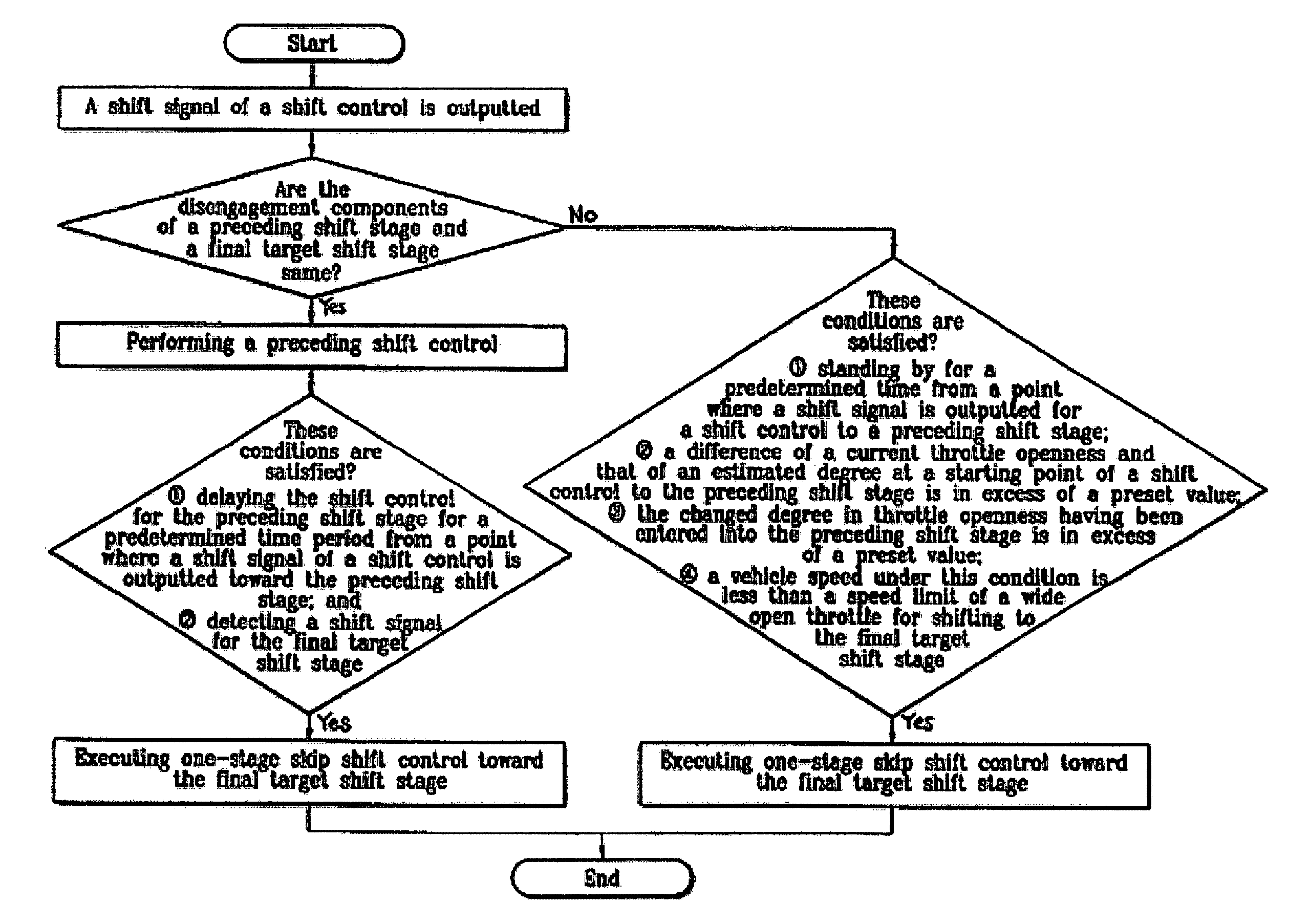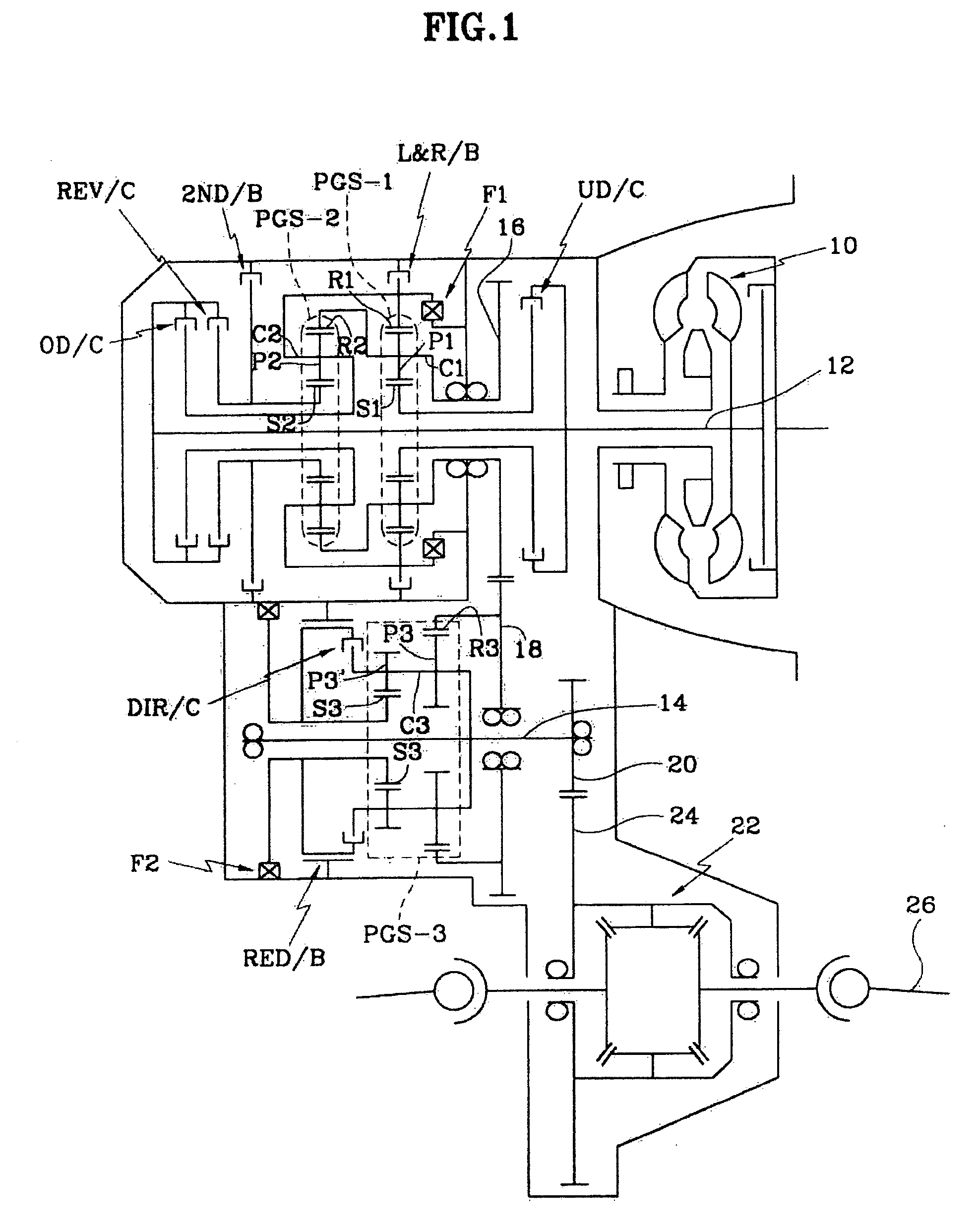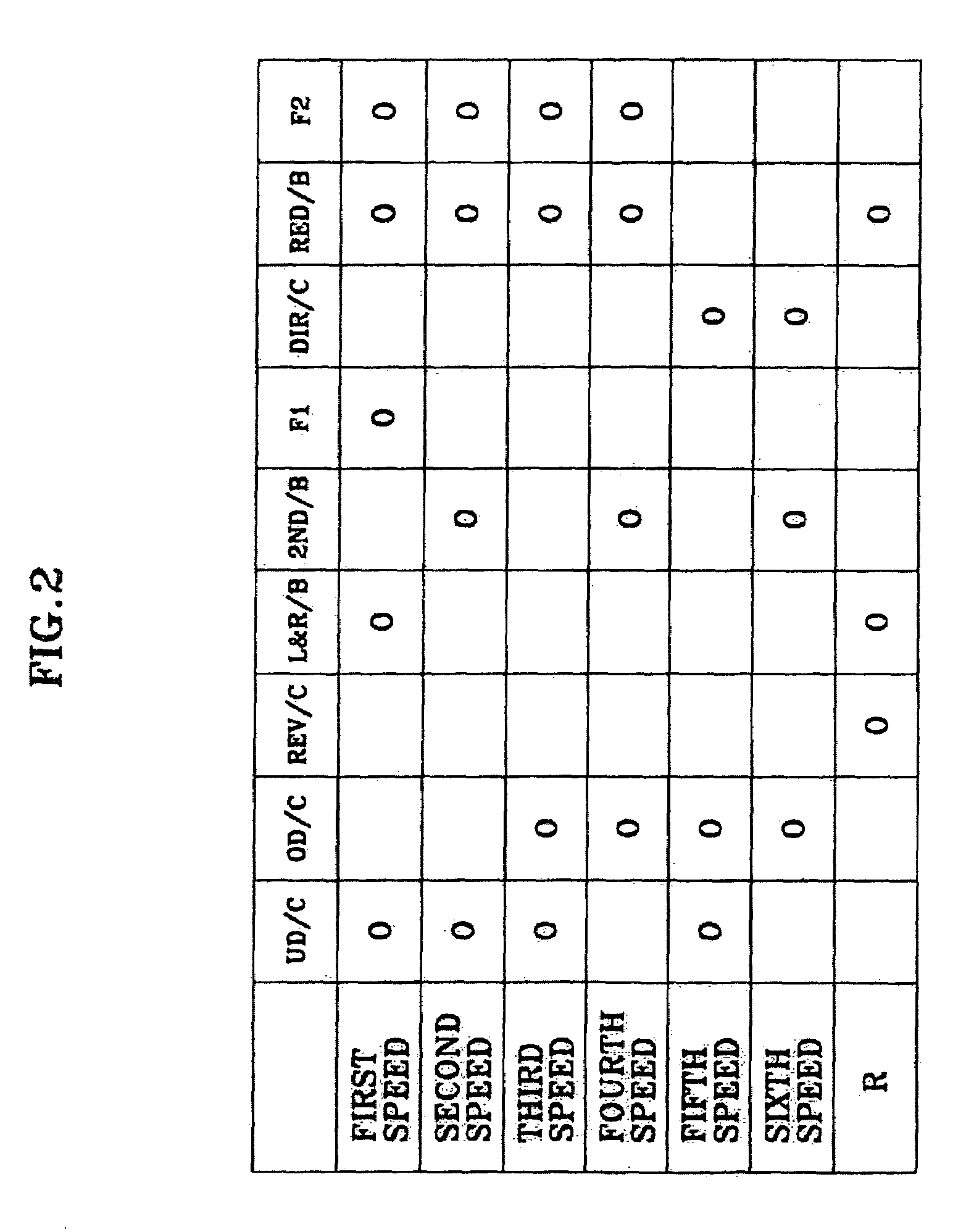Shift control method for six-speed automatic transmission
a technology of automatic transmission and control method, which is applied in the direction of multiple ratio transmission, mechanical equipment, transportation and packaging, etc., can solve the problem that the response of the comparison is reduced by the proportional shift rendered during the skip shift, and achieve the effect of improving the response of the shifting
- Summary
- Abstract
- Description
- Claims
- Application Information
AI Technical Summary
Benefits of technology
Problems solved by technology
Method used
Image
Examples
example i
A Shift Control Method For a One-Stage Skip Shift
[0028]Even when skip shifting is requested, a six-speed automatic transmission of the present invention is designed to perform a shift control to a preceding shift stage when disengagement components of the preceding and final target shift stages are identical. Only when a predetermined set of required conditions is satisfied is a shift control for a one-stage skip shift performed to the final target shift stage. As used herein, preceding shift stage refers to the shift stage that is adjacent the final target shift stage and lies between the current shift stage and the final target shift stage. For example in a shift skip from fifth to second gears, the preceding shift stage is third gear.
[0029]For the required conditions, the shift control for the preceding shift stage is delayed for a predetermined period of time from a point where a shift signal of a shift control is outputted toward the preceding shift stage. Also, a driver's shif...
example ii
Shift Control Method for a Two-Stage Skip Shift
[0039]In the present six-speed automatic transmission, when the difference calculated between a turbine revolution during a synchronization to a preceding shift stage and a current turbine revolution is less than the established value during a shift control for a one-stage skip shift, and if a shift signal to a final target shift stage occurs, a one-stage skip shift is completed to the preceding shift stage and a sequential shift control to the final target shift stage is performed.
[0040]If a driver's intention is previously detected toward the final target shift stage during a shift to a preceding shift stage, a sequential shift to the final target shift stage is performed right after completion of the one-stage skip shift to the preceding shift stage, such that the response of the shift can be improved.
[0041]A friction component disposed at the main shift part is generally engaged in the preceding shift stage and is disengaged in the ...
example iii
Shift Control Method for Greater Than or Equal to a Two-Stage Skip Shift
[0042]In a skip shift greater than or equal to two stages, such as a three-stage skip shift, if a shift signal to the final target shift stage is generated during a one-stage skip shift for the preceding shift stage, a different value is detected between turbine revolution generated during a synchronization with the preceding shift stage and the current turbine revolution. If the different value thus calculated is less than the established one, a one-stage skip shift to a final target shift stage is performed after completion of the one-stage skip shift to the preceding shift stage.
[0043]Once the driver's shift intention is detected toward the final target shift stage during the shift to the preceding shift stage, the target stage can be changed to the final target shift stage in advance. The one-stage skip shift to the final target shift stage is implemented right after the one-stage skip shift to the preceding...
PUM
 Login to View More
Login to View More Abstract
Description
Claims
Application Information
 Login to View More
Login to View More - R&D
- Intellectual Property
- Life Sciences
- Materials
- Tech Scout
- Unparalleled Data Quality
- Higher Quality Content
- 60% Fewer Hallucinations
Browse by: Latest US Patents, China's latest patents, Technical Efficacy Thesaurus, Application Domain, Technology Topic, Popular Technical Reports.
© 2025 PatSnap. All rights reserved.Legal|Privacy policy|Modern Slavery Act Transparency Statement|Sitemap|About US| Contact US: help@patsnap.com



